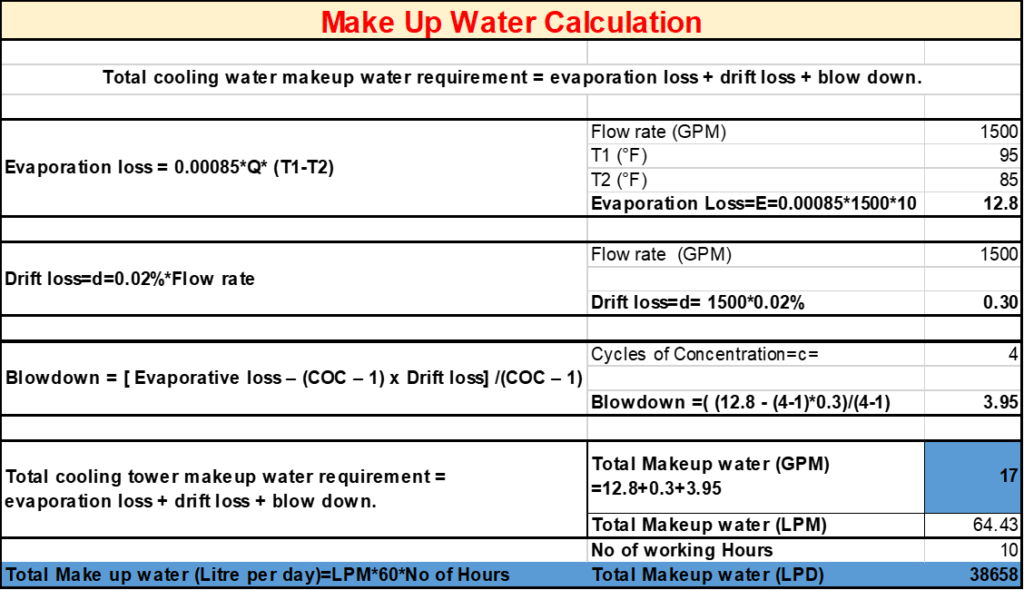A water level in the cooling tower has to be controlled & maintained by Makeup water in order to account for loss of water due to evaporation, blow down & mechanical carryout of water droplets(drift) during operation of cooling tower.
Significance of each parameter is mentioned below with simple calculation of makeup water quantity requirement.
Total makeup water requirement = evaporation loss + drift loss + blow down.
Evaporation Loss (E):
- Evaporation loss is loss of water due to evaporation.
- Rate of evaporation is approximately 1% of the circulation flow for each 10 °F (5.56 °C) of rise between the outlet and inlet across the tower. A correction is needed for factors such as wind, relative humidity, etc. Factor of 0.85 works out to be a reasonable approximation. If the climate is particularly moist, value may go down to 0.65; it if is very dry, it may go upto 1.0 – 1.2.
- It is calculated by this equation:
Evaporation loss = (0.85 *(1/100)* ΔT )/(10) * Flow Rate = 0.00085*Q*(T1-T2)
Where, 0.00085 is evaporation constant Q= Water flow rate in GPM T1= Inlet water temperature in °F T2=Outlet water temperature in °F
Drift Loss (d):
- Drift is entrained water in the tower discharge vapor.
- Drift loss in cooling tower is a function of drift eliminator design.
- Drift loss varies between 0.1 and 0.2 % of water flow. It can be as low as 0.01 or 0.02 % of circulation flow, if the cooling tower has windage drift eliminators.
Drift loss = 0.02% water supply [for new development in eliminator design]
Blowdown (b):
- It is a portion of circulating water that is discharged in order to lower solids concentration due to evaporative cooling.
- Blowdown can be calculated according to number of cycles of concentration (COC) required to limit scale formation.
- COC is best described as ratio of chloride content in circulation water and in makeup water.

- Cycle of concentration is normally 3-4 cycles. When cycle of concentration below 3 cycles, quantity of water to be discharged will be large.
Blowdown = [ Evaporative loss – (COC – 1) x Drift loss] /(COC – 1)
Example: For 1500 GPM Flow rate
